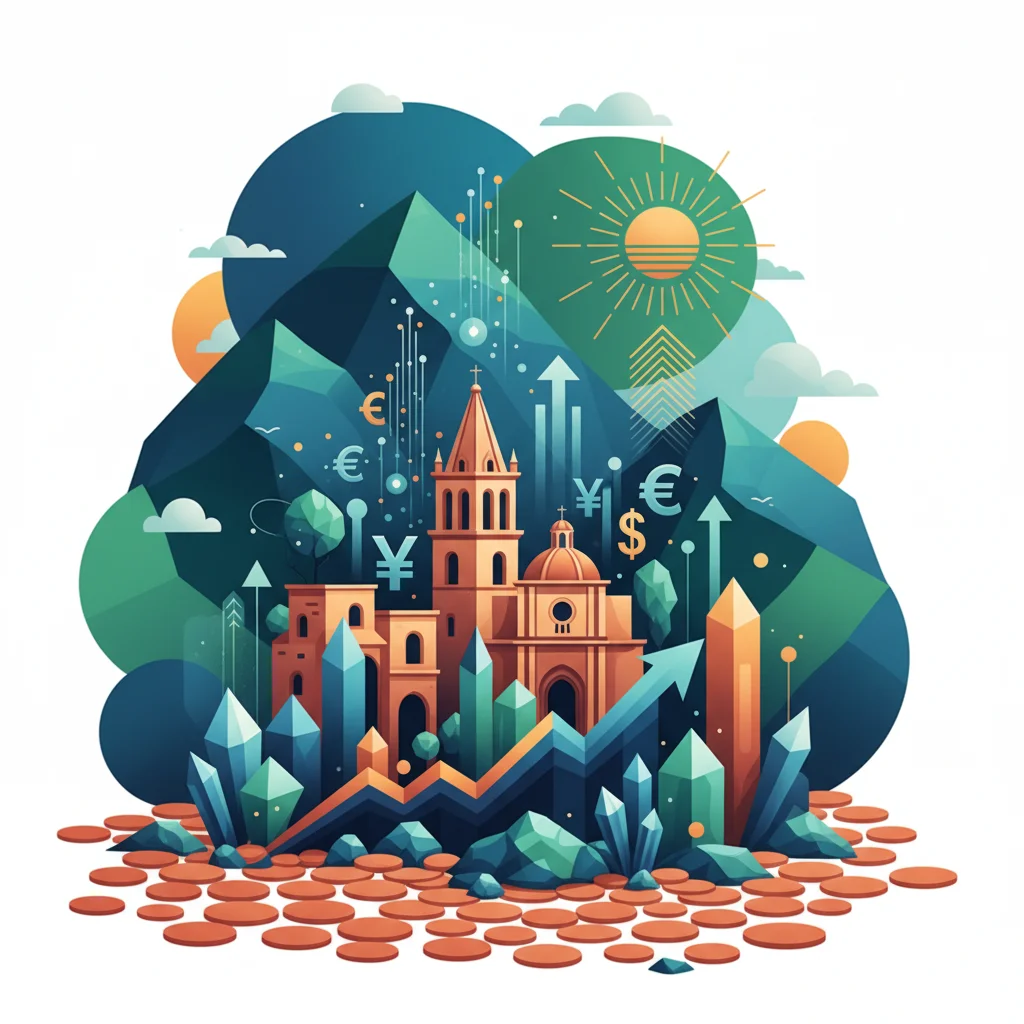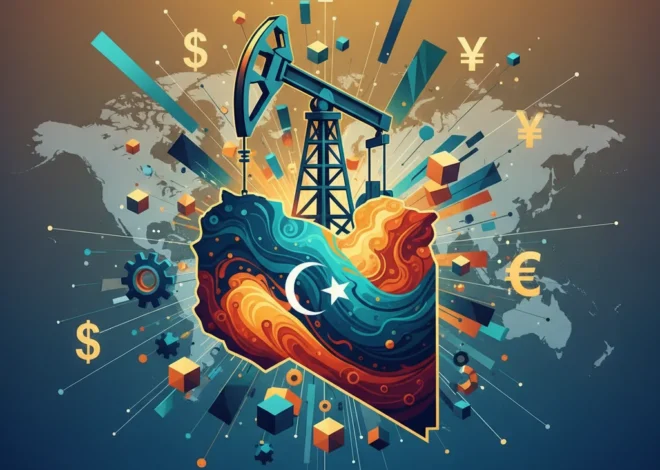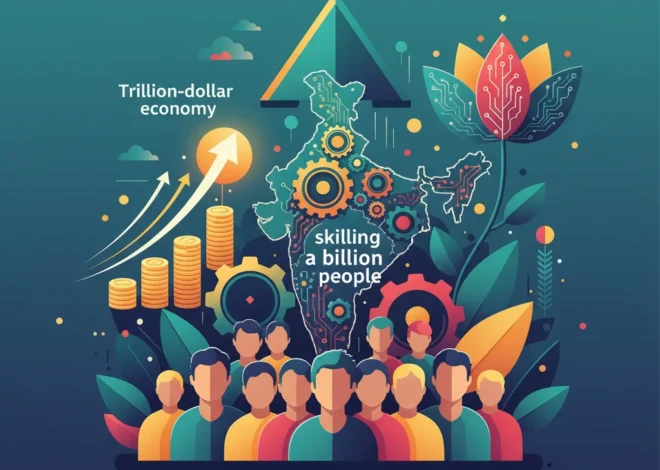
Beyond the Cobblestones: Why San Miguel de Allende is a New Frontier for Finance and Investment
The Altitude of Opportunity: Unpacking the Investment Thesis in Mexico’s Crown Jewel
Nestled high in the central highlands of Mexico, San Miguel de Allende is a city that captivates the senses. Its baroque architecture, vibrant arts scene, and cobblestone streets have long made it a haven for creatives and expatriates. The original article from the Financial Times rightly points out that its “elevated altitude gives it a great climate,” a feature that contributes to its allure as a place for “living the high life (source).” But for the discerning investor, finance professional, or business leader, the “high life” in San Miguel represents something more profound: a unique convergence of lifestyle appeal and compelling economic opportunity.
This is not merely a travelogue about a picturesque UNESCO World Heritage site. It’s an investment deep-dive into a microcosm of Mexico’s evolving economy. We will explore how this colonial gem is becoming a strategic destination for global capital, a testbed for financial technology, and a compelling case study for portfolio diversification in an increasingly volatile world. As we peel back the layers, we’ll connect the dots between local real estate trends and the broader macroeconomic forces shaping Mexico’s position on the global stage, from its dynamic stock market to its burgeoning fintech ecosystem.
Mexico’s Macro Story: The Bedrock of San Miguel’s Appeal
To understand the investment potential of a specific locale like San Miguel de Allende, one must first appreciate the national economic context. Mexico’s economy is a story of resilience and strategic advantage. As the 15th largest economy in the world, it is a key player in global trade, anchored by the United States-Mexico-Canada Agreement (USMCA). This relationship has fueled a “nearshoring” boom, with multinational corporations moving their manufacturing and supply chains to Mexico to de-risk from geopolitical tensions elsewhere.
This influx of foreign direct investment (FDI) is not just a headline; it’s a powerful engine for growth. In 2023, Mexico attracted over $36 billion in FDI, a testament to international confidence in its economic trajectory (source). For investors, this translates into tangible opportunities. Gaining exposure to this growth is accessible through various financial instruments, including ETFs that track the Mexican stock market, such as the iShares MSCI Mexico ETF (EWW), which offers a diversified slice of the nation’s leading public companies.
The state of Guanajuato, where San Miguel resides, is a powerhouse in its own right, boasting a robust industrial base in automotive and aerospace manufacturing. This creates a stable economic foundation that supports ancillary sectors, including the high-end services and real estate market that define San Miguel. The town’s prosperity is not an isolated phenomenon; it’s built upon the broader principles of sound economics and strategic trade policy that are defining modern Mexico.
The ,000 Gold Prophecy: Decoding Bank of America's Bold Bet on a New Commodity Supercycle
Real Estate as a Financial Instrument: The San Miguel Case Study
While the Mexican stock market offers one avenue for investment, the tangible asset of real estate in San Miguel de Allende provides a different, and for many, a more appealing proposition. The city’s property market is a dynamic arena where principles of finance and investing are on full display. It’s a market driven by strong international demand, limited supply due to its historic nature, and a growing reputation as a premier destination for high-net-worth individuals and remote-working professionals.
This influx of “financial expats”—traders, fintech entrepreneurs, and business leaders who can work from anywhere—is reshaping the local landscape. They bring with them not only capital but also a demand for sophisticated banking services, wealth management, and seamless cross-border financial technology. The result is a powerful feedback loop: the lifestyle attracts talent and capital, which in turn drives property values and stimulates the local economy, making it even more attractive.
Let’s contextualize the financial appeal with a comparative look at the cost of living and property, which highlights the “lifestyle arbitrage” opportunity—maintaining a high standard of living for a fraction of the cost of other global hubs.
| Metric | San Miguel de Allende, MX | Austin, TX, USA | London, UK |
|---|---|---|---|
| Consumer Prices (incl. Rent) | ~65% Lower | Reference (100%) | ~15% Lower |
| Restaurant Prices | ~60% Lower | Reference (100%) | ~10% Higher |
| Property Price (Per Sq. Meter, City Center) | ~$2,500 USD | ~$7,000 USD | ~$16,000 USD |
Data is illustrative and based on aggregated information from sources like Numbeo as of early 2024.
This data illustrates a clear value proposition. Capital that would be tied up in living expenses or overpriced real estate in a city like Austin or London can be freed up for active investing, trading, or business development, all while enjoying what the Financial Times calls a “vibrant, artistic town.”
The Fintech Frontier: Banking and Blockchain in the Bajío
The concentration of affluent, international residents in San Miguel creates a fertile ground for financial innovation. Traditional cross-border banking is often slow and costly. This friction creates a significant opportunity for fintech solutions to thrive. Mexico’s fintech sector is already one of the most dynamic in Latin America, projected to generate revenues exceeding $3 billion annually (source). Startups in payments, digital banking, and lending are rapidly gaining market share.
Imagine the possibilities in a place like San Miguel:
- Seamless Cross-Border Banking: Fintech platforms that offer multi-currency accounts, instant transfers, and lower fees are essential for a community that operates across the US, Canada, and Mexico.
- Blockchain in Real Estate: The application of blockchain technology could revolutionize property transactions. By creating immutable digital records of property titles on a distributed ledger, it can enhance security, reduce fraud, and dramatically speed up the closing process. This is the future of financial technology applied to tangible assets.
- Sophisticated Trading Tools: The new wave of residents includes active traders and investors who require high-speed, reliable infrastructure and access to global markets. This demand could spur local development in brokerage services and wealth-tech platforms.
The evolution of this ecosystem is a live case study in how demographic shifts drive technological adoption. The “old world” charm of San Miguel is increasingly powered by the cutting-edge infrastructure of the new digital economy.
A Toast to Economic Growth: Unpacking the Investment Potential of UK Pub Licensing Reforms
A Strategic Allocation for the Modern Portfolio
So, how does an investment in a place like San Miguel de Allende fit into a modern, diversified portfolio? It represents a strategic allocation to an emerging market with a strong growth narrative, offering both potential for capital appreciation and a hedge against volatility in traditional equity markets.
An allocation to international real estate, particularly in a politically stable and economically ascendant country like Mexico, can reduce overall portfolio risk. It provides an income-generating, tangible asset whose performance is not perfectly correlated with the S&P 500 or the NASDAQ. For business leaders, it represents a potential base of operations in a cost-effective, high-quality-of-life location within the North American time zones.
Here is a simplified look at how such an asset could fit within a diversified investment strategy:
| Asset Class | Allocation Percentage | Rationale |
|---|---|---|
| Global Equities (Stock Market) | 50% | Core growth engine, exposure to global corporate earnings. |
| Fixed Income / Bonds | 20% | Stability, income generation, and capital preservation. |
| Alternative Investments (e.g., Venture Capital, Crypto) | 10% | High-risk, high-reward exposure to new technologies like blockchain. |
| Emerging Market Real Estate (e.g., San Miguel) | 10% | Diversification, inflation hedge, potential for high rental yield and appreciation. |
| Cash & Equivalents | 10% | Liquidity for opportunities and emergencies. |
This balanced approach demonstrates that investing in a market like San Miguel isn’t a whimsical lifestyle choice; it’s a calculated financial decision rooted in the principles of modern portfolio theory.
Conclusion: The Intersection of Culture, Capital, and Code
San Miguel de Allende is far more than a beautiful postcard. It is a living laboratory for the future of globalized living and investing. It demonstrates how a strong macroeconomic foundation, coupled with unique cultural appeal, can create a powerful magnet for capital and talent. For the finance professional, it offers a lesson in the economics of desirability. For the investor, it presents a tangible asset class with a compelling growth story. And for the fintech innovator, it is a community ripe for the deployment of technologies that can redefine banking, trading, and real estate transactions.
Living the “high life” in Mexico is no longer just about the climate and the culture. It’s about positioning oneself at a higher altitude of economic opportunity, where the charm of the old world meets the boundless potential of the new global economy.


